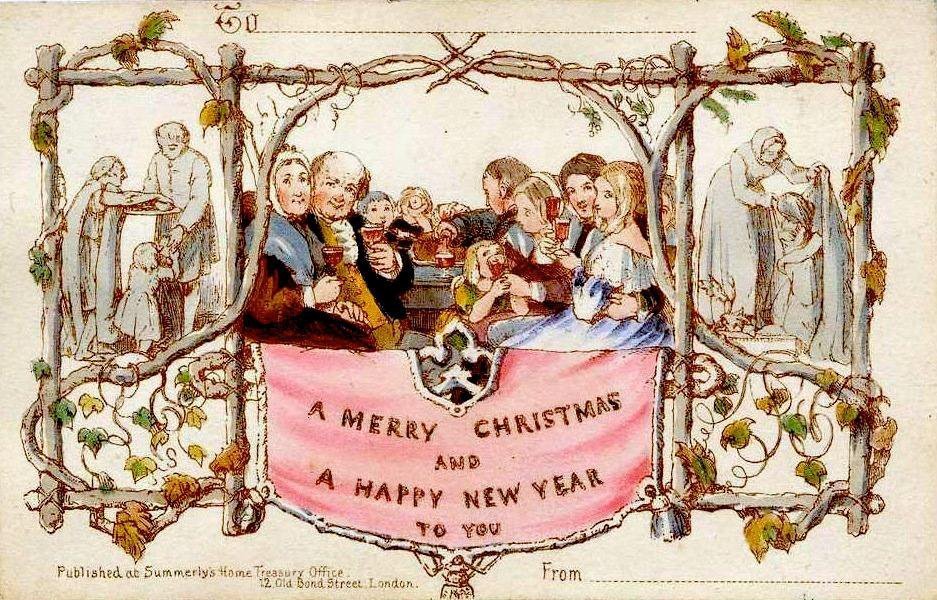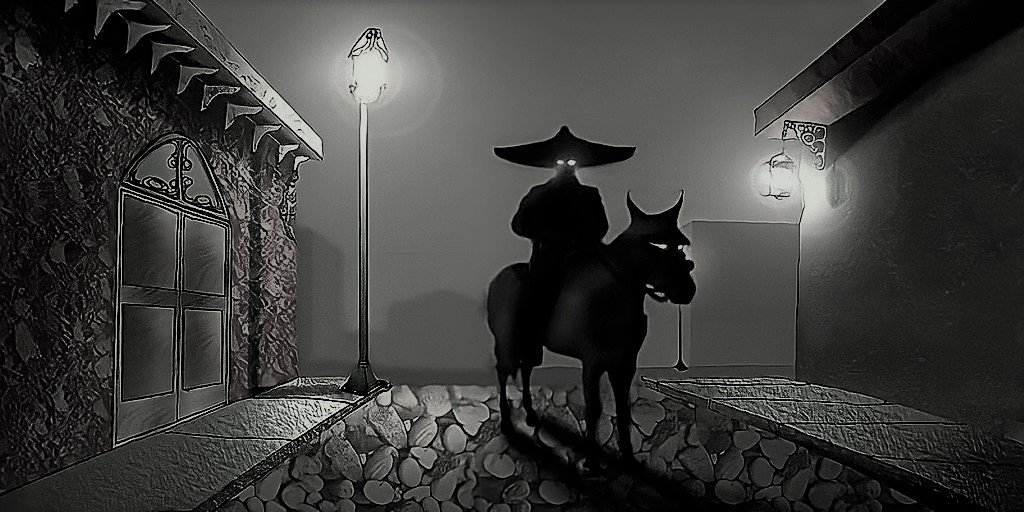The Origins of 5 Christmas Traditions
Christmas as it’s celebrated today is a mix of multiple different traditions and celebrations going all the way back to its pagan roots. Today we’ll look at 5 different Christmas things that we still do including one we shouldn’t be doing anymore:
Poinsettias for Decor
Before they were called Poinsettias these bright red plants were called “Flores de Noche Buena” or “Flowers of the Holy Night” and were native to Mexico. Sure they had other names like “Mexican Flame Flower” and “Painted Leaf Flower” due to their bright red color but the name “Flores de Noche Buena” comes with its own legend.
In the 16th century a young girl, sometimes named Pepita, was on her way to a traditional Christmas Eve Mass but was distraught over not having a gift to present for baby Jesus. An angel then miraculously appeared and told her to take some weeds and place them at the feet of the statue.
The girl did so and at the church placed the weeds by the statue. In front of all the other church-goers, they blossomed into bright red poinsettias, and from that day forward they were known as “Flores de Noche Buena”. Since weeds can’t actually blossom into Poinsettias, we can comfortably say the legend was made up.
“Give it a minute!” - Random Angel
As for the United States, it wasn’t until Joel Roberts Poinsett, the first U.S. Minister to Mexico, brought the plant from Mexico to South Carolina in the early 1800’s that it gained popularity in the U.S.
Around the mid-1800s the plant was renamed in the United States to Poinsettias in honor of Joel Roberts Poinsett and to honor the established tradition of the United States taking Mexico’s things and renaming them. See: Texas, California, New Mexico, etc.
2. Christmas Trees
Some of the earliest stories tying trees to Christmas date back to the 8th century when the “Apostle of Germany” St. Boniface encountered several Germanic Druids worshipping the oak tree.
Seeing this, St. Boniface presumably said “This ain’t Christian”, and decided to chop down the tree in front of the druids to show it wasn’t all-powerful. The stories say when the oak tree fell it crushed all the other trees except for a small fir sapling. This led St. Boniface to declare it a miracle and named it “Christ’s Child”.
Several centuries later many in Germany were placing the “Christ’s child” trees in their homes by… chopping them down… and then decorating them with homemade decorations along with apples.
But what about lights? The widely accepted story is one involving the protestant reformer Martin Luther of the 16th century.
According to legend, while on his way home from a walk he was stopped by the beauty of the stars shining behind a group of evergreen trees. Wanting to show his family, he placed a tree in his living room and added candles to its branches to replicate what he saw. Amazingly this didn’t lead to a fire and from then on the tradition was born.
“Why didn’t we just go outside to see the same tree?!”
3. Why We Send Christmas Cards
In a time before you could just post a generic Instagram message or send a “Merry Christmas” in a group chat, people actually chose to write letters to their friends and loved ones.
This was clearly a hassle, which was a sentiment shared by a 19th-century London socialite, Sir Henry Cole. Seeing an opportunity to take advantage of the newly established penny post, Henry commissioned artist John Calcott Horsley to create a template for a card he could send to everyone and just be done with it.
Using the template, in 1843 he printed one thousand cards with the generic message “Merry Christmas and a Happy New Year”. While some of Henry’s friends did copy his idea in the following years, Christmas cards didn’t really take off for a few decades.
Would go straight in my Christmas Card holder…
In 1875 lithographer and printing company owner, Louis Prang started selling Christmas cards with a unique take in the United States. Instead of festive Christmas designs, the cards displayed bright and beautiful designs of nature. The only way of telling they were actual Christmas cards was the “Merry Christmas” text on the inside.
These cards became collector’s items with many rushing to collect them like they were this generation’s Pokémon cards, which is very different from what I do with my Christmas cards that are currently in my special Christmas card holder.
My Christmas Card holder
So when did Christmas and Holiday cards become the disposable items they are today? Around 1915 when a small postcard printing company owned by Joyce Hall decided to dip its toes in the holiday card game.
Joyce was eventually joined by his two brothers and the company was renamed Hallmark; and the greeting card section at Target tells me that worked out for them. Today you can get all sorts of different holiday cards from Christmas trees, angels, and even a small reindeer with a red nose, speaking of which…
4. The Origin of Rudolph the Red Nosed Reindeer
Should really see a doctor about that nose
Or should I say Rollo or maybe Reginald since both of those names were almost chosen instead of Rudolph until a four-year-old girl stepped in?
Compared to some of the other things on this list, the origin of Rudolph is actually pretty recent. Back in 1939 Chicago-based department store, Montgomery Ward launched a marketing campaign that included a free booklet for all their customers who walked into the store.
The booklet was to include, among other things, a festive Christmas poem, and the person chosen to write it was copywriter Robert L. May. The first draft included Rollo the Red-Nosed Reindeer but the name was shot down by the bigwigs at Montgomery Ward.
Wanting to still keep the alliteration in the name, Robert made a list and asked his four-year-old daughter for help. She chose Rudolph and the rest is history… well not quite.
Poems are great and all but what really skyrocketed Rudolph was the catchy song. In 1947 a friend of Robert L. May named Johnny Marks had the brilliant idea to write music for the poem. Two years later Gene Autry recorded the song and it became an instant classic.
5. Mistletoe
We should probably stop this one if we haven’t already…
References to the mistletoe plant being of some importance exist in multiple cultures across history. Pagans, Celtic Druids, Romans, and Greeks believed the plant could heal, often using it as medicine and fertility treatments. Belief in its special properties led some to burn it as a sacrifice to their gods and possibly for human sacrifice.
This plant is for medicine… and murdering!
In Norse mythology, the god Loki used mistletoe to kill the pretty much immortal god Baldur. When Baldur’s mother, Frigg, learned of his death she asked the other gods to bring him back to life, paying them with kisses. According to one version, Frigg was then tasked to ensure all who walk under a mistletoe must kiss or else they would suffer bad luck.
But none of these were the exact origin of mistletoe as it’s used today since those beliefs fell out of favor throughout the centuries with help from the Christian Church.
In the 4th century, the Christian Church forbade the use of mistletoe because of its non-Christian roots and chose Holly as a replacement. The sharp leaves were said to symbolize the thorns on the crown of Jesus Christ and the red berries symbolized drops of his blood because the Christian Church apparently has no chill.
“The red represents how many sins we carry from birth and our need to repent.” - Christian Church probably
So when did kissing under the mistletoe start?
The earliest record we have comes from the 18th century when servants in England were kissing under it and at some point, it became a Christmas tradition. The tradition then caught on with others extending to the middle class and taking off from there.
References to the tradition in “A Christmas Carol” and the song “I Saw Mommy Kissing Santa Claus” only helped further the tradition.
Quick Facts
The Aztecs used poinsettias to make medicine and use the plant leaves to make a reddish-purple dye.
Poinsettias are actually not poisonous despite many myths and second-hand stories, they will make some people vomit and feel nauseous but they will not kill you.
In 1843 when Sir Henry Cole sent out the first mass-produced Christmas card, merry was another word for “blessed” as opposed to today’s meaning of “happy”.
From 1947 to 1949 multiple singers declined to record the first version of “Rudolph the Red-Nosed Reindeer” until Gene Autry finally agreed.
Mistletoes are essentially parasitic on the branches of trees and shrubs. The most common species in North America is called Phoradendron, Greek for “tree thief.”
Mistletoe can often be found where birds leave their excrement which leads to the plant getting its name, “mista” or “mistel” means “dung”.
























